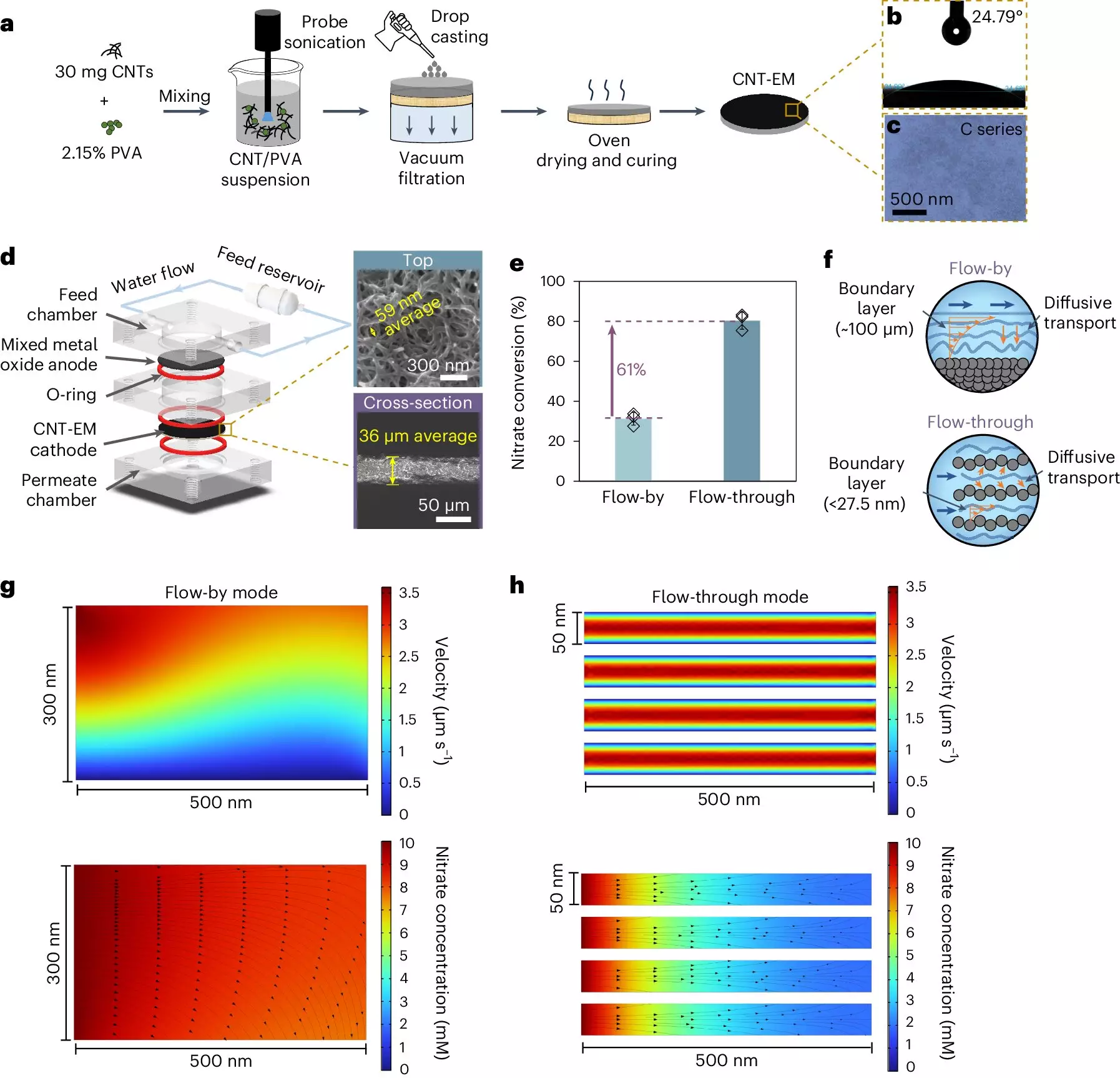Nitrate contamination in drinking water is a growing environmental concern, posing significant health risks to humans and ecosystems alike. Elevated nitrate levels can result from agricultural runoff, wastewater discharge, and various human activities, leading to conditions like methemoglobinemia, or “blue baby syndrome,” where oxygen delivery in infants’ blood is impaired. The urgency of tackling nitrate pollution has led researchers to explore innovative removal methods, with breakthroughs increasingly necessary to ensure safe drinking water for the global population.
A Breakthrough in Nitrate Removal Technology
Recent advancements by a team of Yale researchers, spearheaded by Assistant Professor Lea Winter, present a promising solution in this fight against nitrate pollution. By utilizing electrified membranes constructed from carbon nanotubes, they have developed a novel approach to nitrate removal that not only promises efficiency but also aims to minimize environmental repercussions. Published in the esteemed journal Nature Water, the research champions a paradigm shift in the traditional methodologies that have long dominated the field.
The conventional avenues for nitrate removal typically orbit around two distinct approaches: separation and destruction. While separation can yield effective short-term results, it often leads to concentrated waste that poses significant risks when reintroduced into the environment. In contrast, the destruction of nitrates ensures that the harmful compounds are completely eliminated, thereby providing a safer and more sustainable solution.
Challenges and Limitations of Traditional Methods
Traditional methods, especially those relying on biological denitrification found in wastewater treatment plants, grapple with numerous limitations. These biological systems are inherently fragile, sensitive to any shifts in pH, temperature, or composition, making them susceptible to malfunction. Furthermore, the reliance on microbial processes can lead to a sluggish elimination of nitrates, extending the time required to achieve acceptable levels of contamination.
Alternatively, electrocatalytic techniques have emerged as a more controlled method for nitrate destruction, offering swifter results. However, even these comprehensive systems are not without their drawbacks. The reliance on two-dimensional flat plate electrodes often results in slow transport rates of nitrates to the reaction sites, inevitably impacting efficiency. This is where Winter’s innovative research takes center stage by introducing electrified membranes that alleviate these challenges.
The Mechanics of Electrofied Membranes
The ingenuity of Winter’s research lies in the design of electrified membranes comprised of carbon nanotubes, interwoven with a polymer matrix. This unique structure significantly alters the traditional dynamics of nitrate interaction with electrodes. The membranes feature pores measuring roughly 50 nanometers—2,000 times smaller than the boundary layers typically encountered in conventional systems. This drastically enhances the movement of nitrates towards the electrode surface, thereby accelerating reaction rates.
Because these membranes avoid the use of metals commonly utilized in electrochemical systems, they underscore a critical advantage: the instantaneous conversion rates of nitrate are astonishingly higher. In laboratory tests, the electrified membranes achieved an impressive 80% nitrate removal in a mere 15 seconds, as compared to the hours traditionally required. This monumental reduction in processing time illustrates not only efficiency but also the potential for scaling this technology to address widespread water contamination.
Real-World Applications: A Path Ahead
To validate their laboratory findings, Winter’s research team undertook testing with real-world water samples from Lake Wintergreen, emphasizing their commitment to exploring the effectiveness of the membrane technologies in authentic contamination scenarios. By intentionally introducing nitrates into the sampled water, they sought to evaluate this innovative method’s capacity to function under conditions that mirror those typically found in contaminated water sources.
This real-world testing holds critical implications for municipal water treatment facilities, especially those grappling with the issues associated with traditional nitrate removal technologies. The promise of quick, effective nitrate destruction could fundamentally alter how contamination is managed across various contexts, heralding a new era of water safety practices.
Looking Forward: The Future of Water Treatment
As the global population continues to grow and environmental challenges mount, innovative water treatment technologies such as those developed by Winter’s team reflect the urgent need for scalable and sustainable solutions. The electrified membrane technology stands poised to contribute significantly to addressing the dire issue of nitrate contamination, potentially revolutionizing how we approach water safety.
Through continued research and real-world applications, we can expect further insights that promise not only to safeguard public health but also protect ecological integrity. As unprecedented challenges concerning water quality persist, it is clear that we must embrace such technological advancements to secure a cleaner, healthier future for generations to come.

